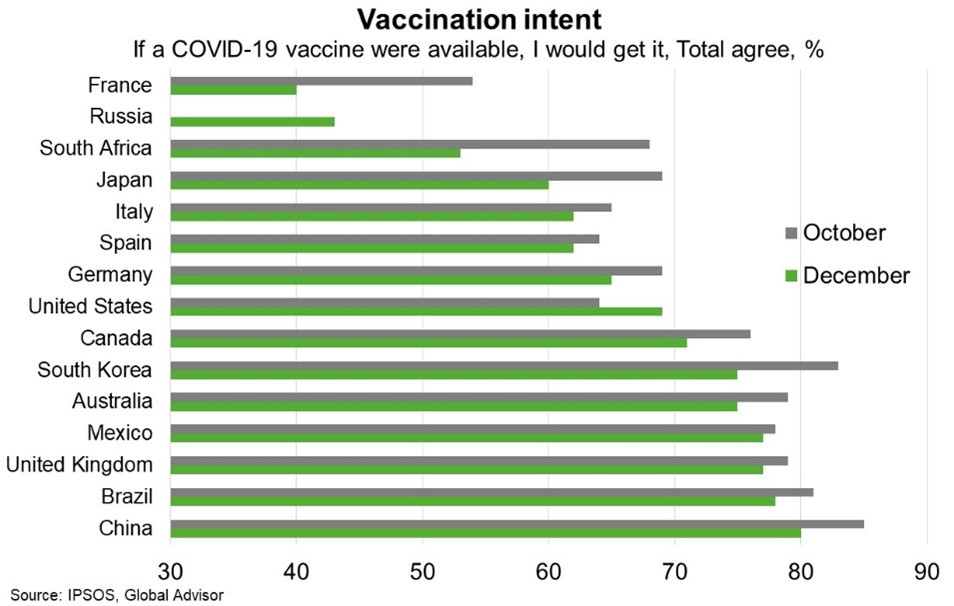World—Vaccine powered boost to activity is partial and uncertain
Multiple vaccine approvals and the launch of their worldwide rollout has raised hopes of an eventual end to the pandemic. With growing vaccine availability and improved therapies, testing and tracing, the IMF expects local transmission to be brought to low levels everywhere by the end of 2022.
However, several challenges could delay this achievement. For instance, vaccines could deliver shorter-lived immunity than anticipated with the need for boosters lengthening the timeline. On the supply side, capacity constraints could curtail production and logistics problems could delay distribution. On the demand side, poorer countries may struggle to fund doses; although COVAX aims to help vaccinate up to 20% of lower-income country populations. Vaccine hesitancy may also undermine the timeline. A 15-country survey in partnership with the World Economic Forum in December found vaccination intent varied from 80% in China to as low as 40% in France (Chart). Particularly worrying, in most countries, vaccination intent had fallen since October. Further, virus mutations may evade the protection of current vaccines, necessitating the development of new candidates.
The EIU suggests many Asian developing countries will not achieve widespread immunisation within the next five years. Given varying immunisation rates between countries and that no vaccine is completely effective, controls on international travel (including tests and quarantines) could remain even once widespread domestic vaccination is achieved. The easing of international travel restrictions is critical for a material recovery of Australia’s tourism and education exports ($65 billion in 2019, 13% of exports). Thereafter, the speed of the recovery is highly uncertain. While pent-up demand will likely see an initial boost when borders reopen, the pandemic may have lingering negative effects on attitudes toward travel and long-haul airline capacity.

